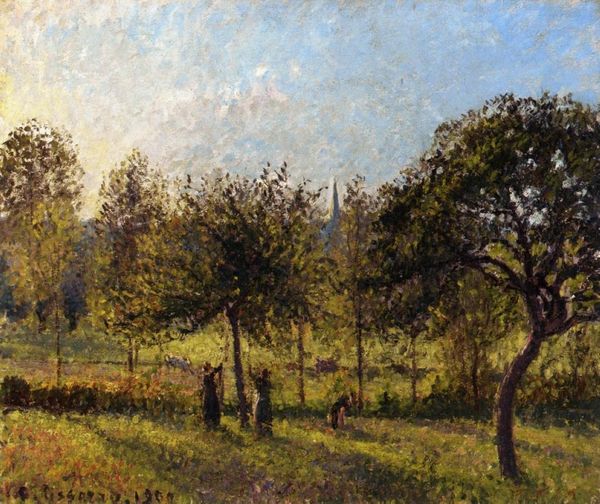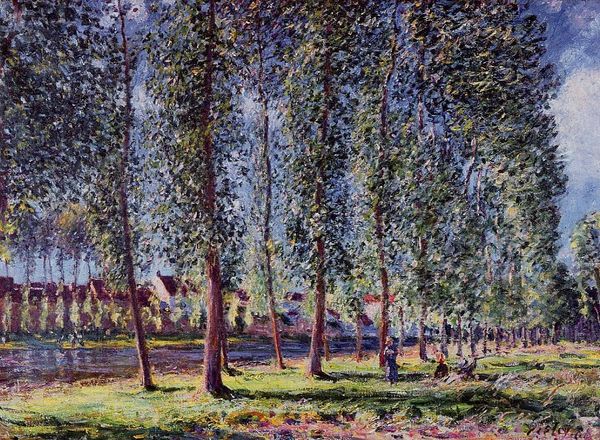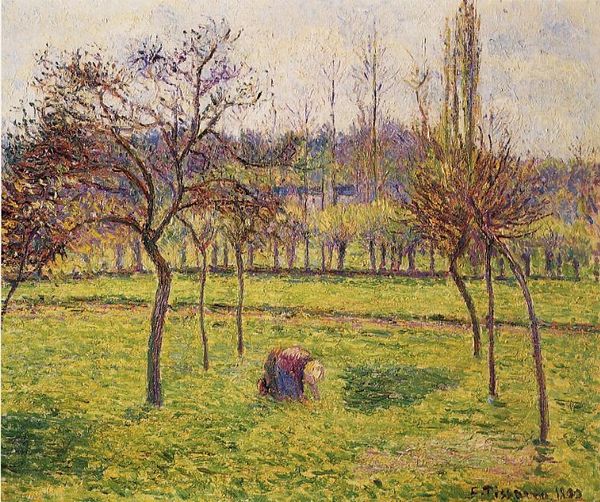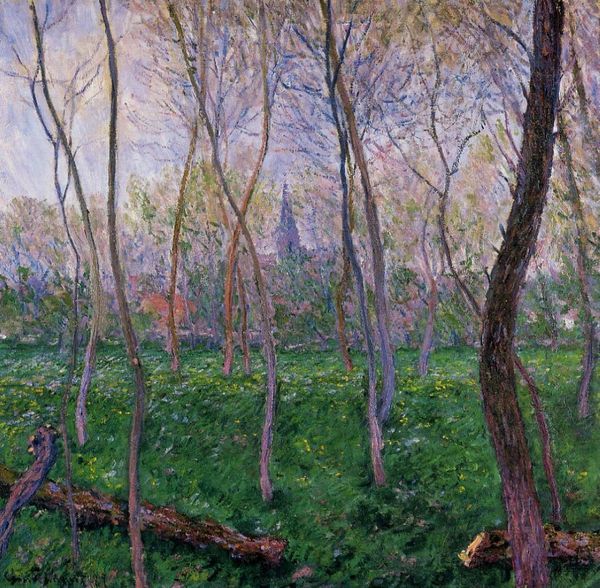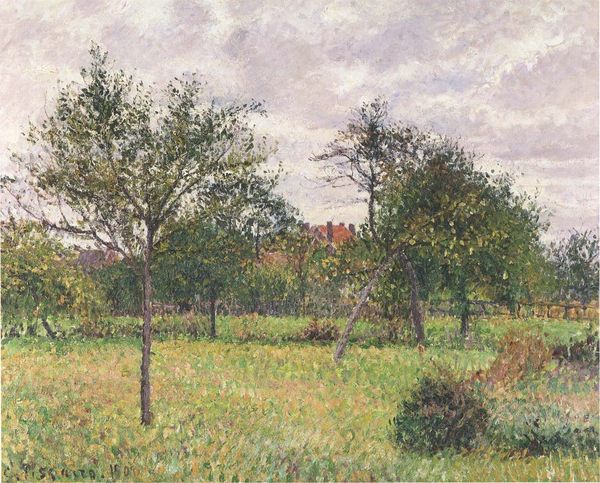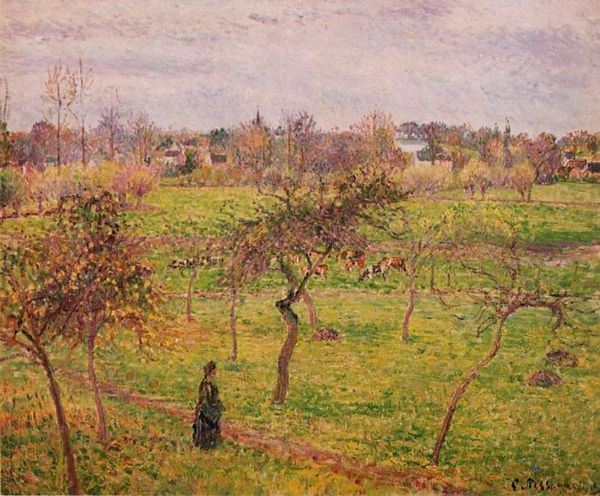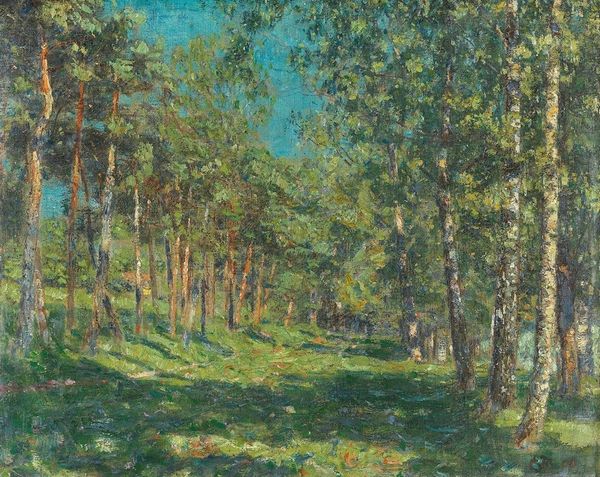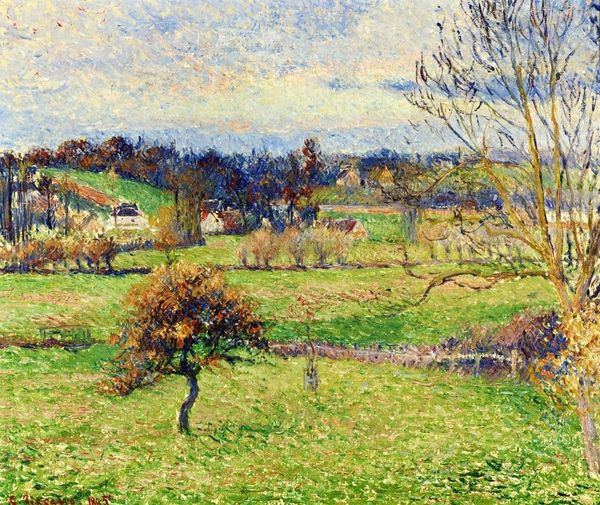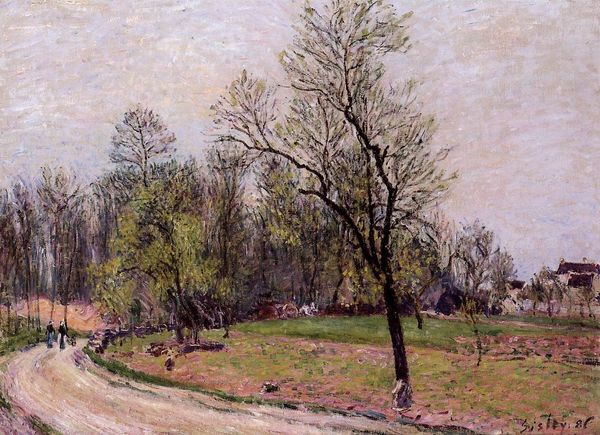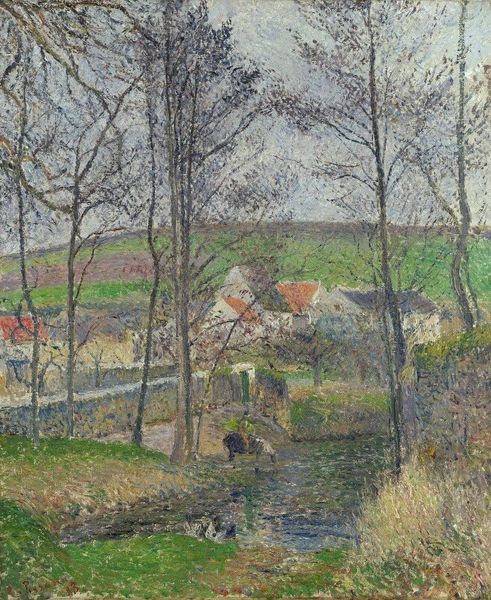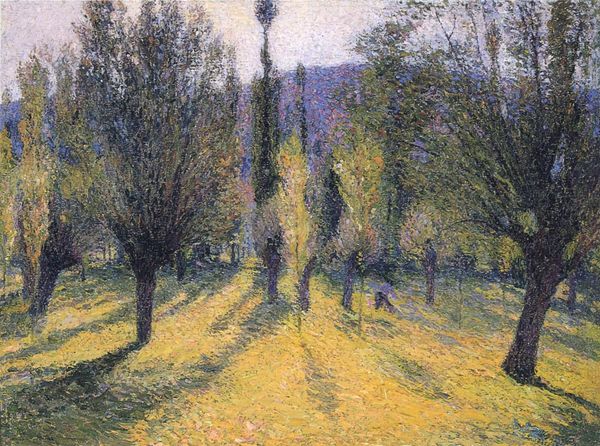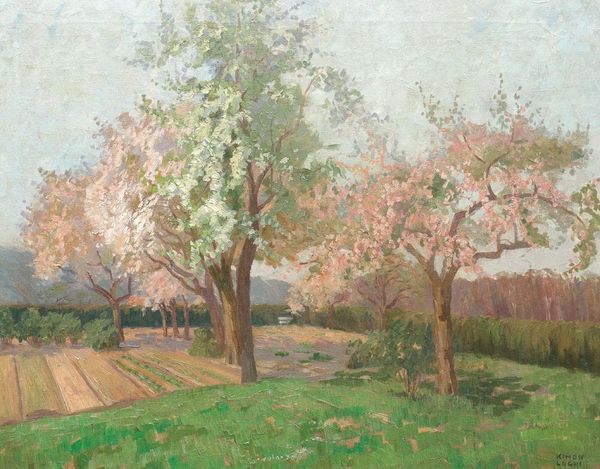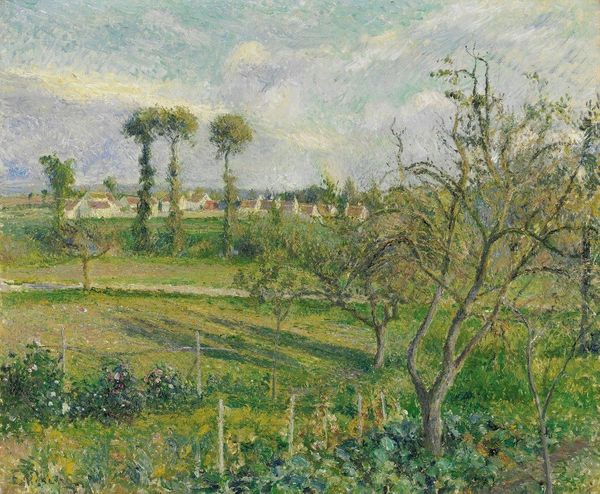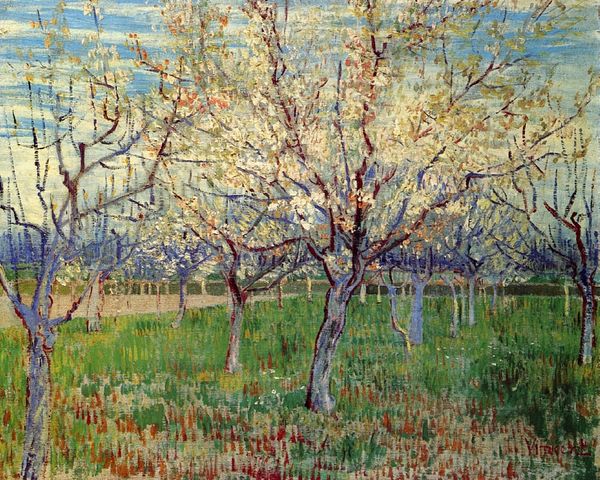
Dimensions: 55 x 46 cm
Copyright: Public domain
Curator: Here we have Camille Pissarro's "Meadow at Bazincourt," completed in 1885. Pissarro, a key figure in the Impressionist movement, rendered this scene en plein air, focusing on capturing the fleeting effects of light and atmosphere. Editor: The immediate impression is one of dappled sunlight. It feels serene but with a subtle hint of melancholy. The palette, a muted dance of greens and browns, imbues the painting with a quiet intensity. Curator: Exactly! This work speaks to Pissarro’s interest in depicting the French countryside and the lives of those who inhabited it. You have these towering vertical trees in the front of the work, almost like columns in a way, framing the architecture visible in the mid-ground of the scene. Pissarro was very aware of the social role of landscape painting and how it could legitimize the natural world. Editor: Absolutely. There is that sense of legitimizing nature, but for whom? One could read these trees almost as bars, corralling that solitary figure partially hidden near one of the central trunks. Are they free, or are they trapped within the confines of societal expectations for working-class women of the era? Curator: An interesting point. His involvement with anarchist circles also raises questions about land ownership and access to resources, although the framing here, with the presence of nature and buildings, isn't quite explicitly addressing land issues as some of his other paintings. Editor: But perhaps implicitly? The visible rooftops remind us of civilization’s encroachment upon this pastoral setting, potentially underscoring tensions between industry and agriculture or even tradition and modernity. This feels less like pure documentation and more like a considered commentary on the changing landscape. Curator: It is difficult to ascertain his complete thought process. Yet Pissarro continued to be very important as a socially aware painter, someone who understood and cared for the state of things surrounding him and used landscape as a vessel for these beliefs. Editor: I see this painting now with even more appreciation, mindful of how the visible, and also the unseen, forces from the period may continue to be visible today. Curator: Yes, considering the dialogue around rural landscapes as contested spaces certainly gives another level of depth to Pissarro's work.
Comments
No comments
Be the first to comment and join the conversation on the ultimate creative platform.
